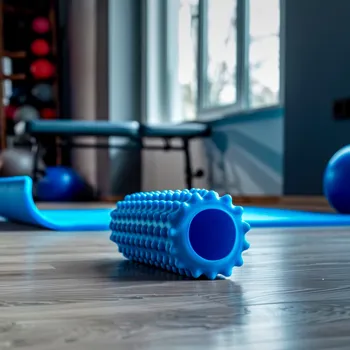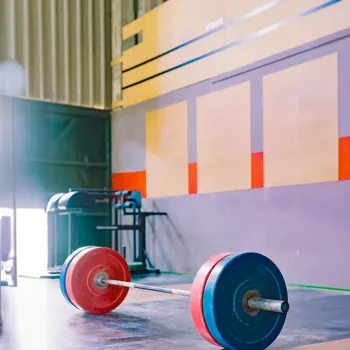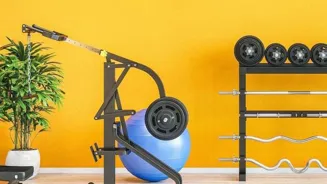Unraveling 10 Fitness Myths: Get the Truth Behind Exercise Misconceptions! Dive in to enhance your fitness journey
Namaste, fitness enthusiasts! In a country like India, where we're increasingly becoming
health-conscious, a lot of information, sometimes right, sometimes wrong, is circulating around fitness. It's easy to get caught up in beliefs that hinder progress and can even be harmful.
Today, we're taking a look at ten common fitness myths and presenting the truth behind them, guiding you towards a more effective and safer fitness journey. Understanding what’s real and what’s not is crucial for achieving your health goals. Let's separate the facts from the fiction!
Spot reduction is a myth; target fat loss with exercise and diet
Many believe that they can target a specific area of their body, like the stomach, and reduce fat only in that area through exercise. Sadly, this is simply not true. "Spot reduction" is a popular fitness myth. When you exercise, your body burns fat from all over, not just the area you're working on.

Doing endless crunches might build abdominal muscle, but it won't eliminate belly fat unless you have overall fat loss. The best approach to lose fat is a combination of regular exercise and a well-balanced diet.
Cardio exercises, such as running, swimming, or cycling, help burn calories, while strength training builds muscle mass, increasing your metabolism. This combined approach helps reduce overall body fat, in turn, reducing the fat in your target area.
Remember, a calorie deficit is key to fat loss, meaning you need to burn more calories than you consume.
Push yourself wisely to avoid injuries and see long-term results
While it's true that you need to challenge yourself to see results, the saying "no pain, no gain" can be misleading. A little muscle soreness after a workout is normal, but intense pain is your body telling you something is wrong.

Pushing yourself too hard can lead to injury, setting you back weeks or even months. The aim should be to work within your limits and gradually increase the intensity of your workouts. Listen to your body. If you're feeling pain, stop and rest. Proper form is also important to prevent injuries.
It is better to do the exercise correctly than to push hard without the correct form. If you are new to exercise, consult a fitness professional to learn proper techniques before starting. Remember, consistency is more important than intensity.
Regular workouts that are challenging but manageable will lead to better long-term results than occasional, overly intense sessions.
Cardio and strength training both key for weight loss
Cardio workouts are a great way to burn calories and improve your cardiovascular health, but they aren't the only path to weight loss. Many people think that only cardio makes you lose weight. Strength training is equally, if not more, important.

Building muscle mass increases your metabolism, meaning you burn more calories even when you're at rest. Strength training also helps improve your body composition, making you look leaner and more toned. Aim for a balance of both cardio and strength training in your exercise routine.
Incorporate exercises like squats, lunges, push-ups, and rows to build strength. Don't forget to warm up before each workout and cool down afterward to prevent injuries. Remember diet plays a crucial role in weight loss.
A healthy, balanced diet combined with exercise is the most effective way to lose weight and keep it off.
Women should lift weights for lean muscle and health benefits
This is one of the most common misconceptions that women have about weightlifting. Many women avoid lifting weights because they fear becoming bulky and losing their femininity. However, this is largely untrue.
Women have lower levels of testosterone than men, which makes it difficult for them to bulk up significantly. Lifting weights will help women build lean muscle mass, which can improve their body shape, increase their metabolism, and make them stronger.
Strength training is incredibly beneficial for women, improving bone density, reducing the risk of osteoporosis, and boosting their overall confidence and well-being. Don't be afraid to lift weights. Start with lighter weights and gradually increase the weight as you get stronger.
Consult a qualified fitness instructor to guide you with the right exercises.
Rest days are crucial for recovery and muscle repair
While consistency is important, your body also needs time to rest and recover. Many people believe they need to work out every single day to get results. Overtraining can lead to fatigue, injuries, and even burnout. Rest days are crucial for allowing your muscles to repair and rebuild.

Aim for at least one or two rest days per week, and listen to your body. If you're feeling tired or sore, take an extra day off. Recovery is just as important as the workout itself. Sleep plays a vital role in muscle recovery and overall health. Aim for 7-8 hours of quality sleep each night.
Incorporate active recovery into your rest days, such as gentle stretching or walking, which can help reduce muscle soreness and improve blood flow.
Supplements are optional; prioritize a balanced diet and exercise
The supplement industry is huge in India, with countless products promising quick results. While some supplements can be beneficial in certain situations, they are not necessary for everyone. A well-balanced diet should provide you with all the nutrients you need.
Focus on eating whole, unprocessed foods, like fruits, vegetables, lean protein, and complex carbohydrates. If you do choose to take supplements, be sure to do your research and talk to your doctor or a registered dietitian first. Not all supplements are created equal, and some can even be harmful.
Be wary of products that make unrealistic claims or promise rapid weight loss. Remember, supplements are meant to supplement a healthy diet, not replace it. Always prioritize a nutritious diet and regular exercise over relying on supplements for your fitness goals.
AI Generated Content. Glance/InMobi shall have no liability for the content










